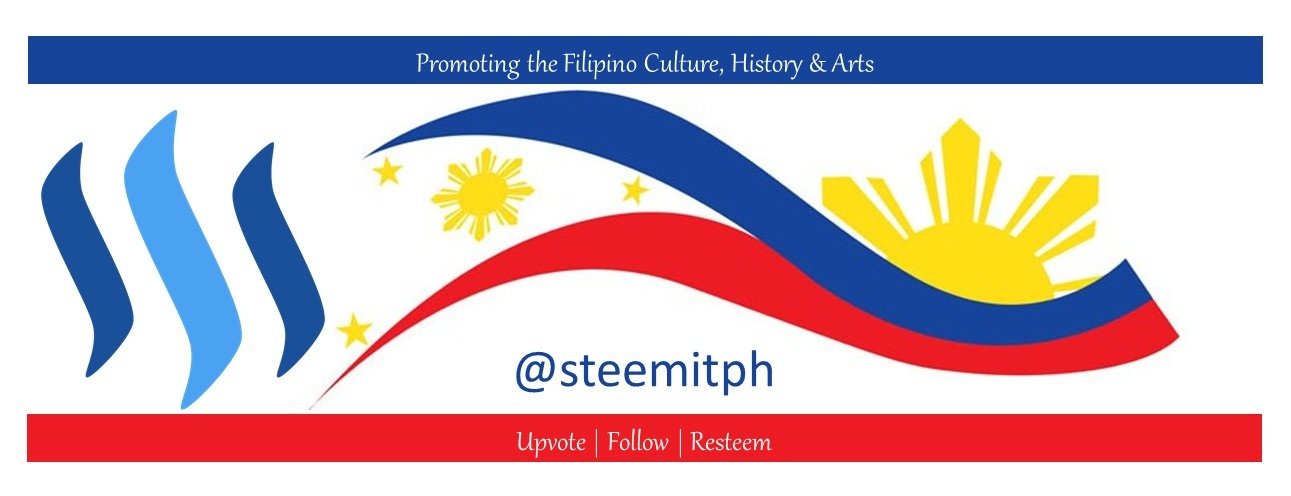Coming from an industry with high propensity to be inclined towards learning and adapting western culture, I try to use what little influence I have to once in a while go back to our roots and take pride of our own culture and traditions. Last week, I asked my team to decorate their workstations based on Philippine provinces sights, festivities, or simply about what that province is known for. The response from the team and how they applied their creativity and teamwork was amazing. Featured in this post are my amazing team members and their work.
Philippine International Hot Air Balloon Fiesta - Clark Pampanga
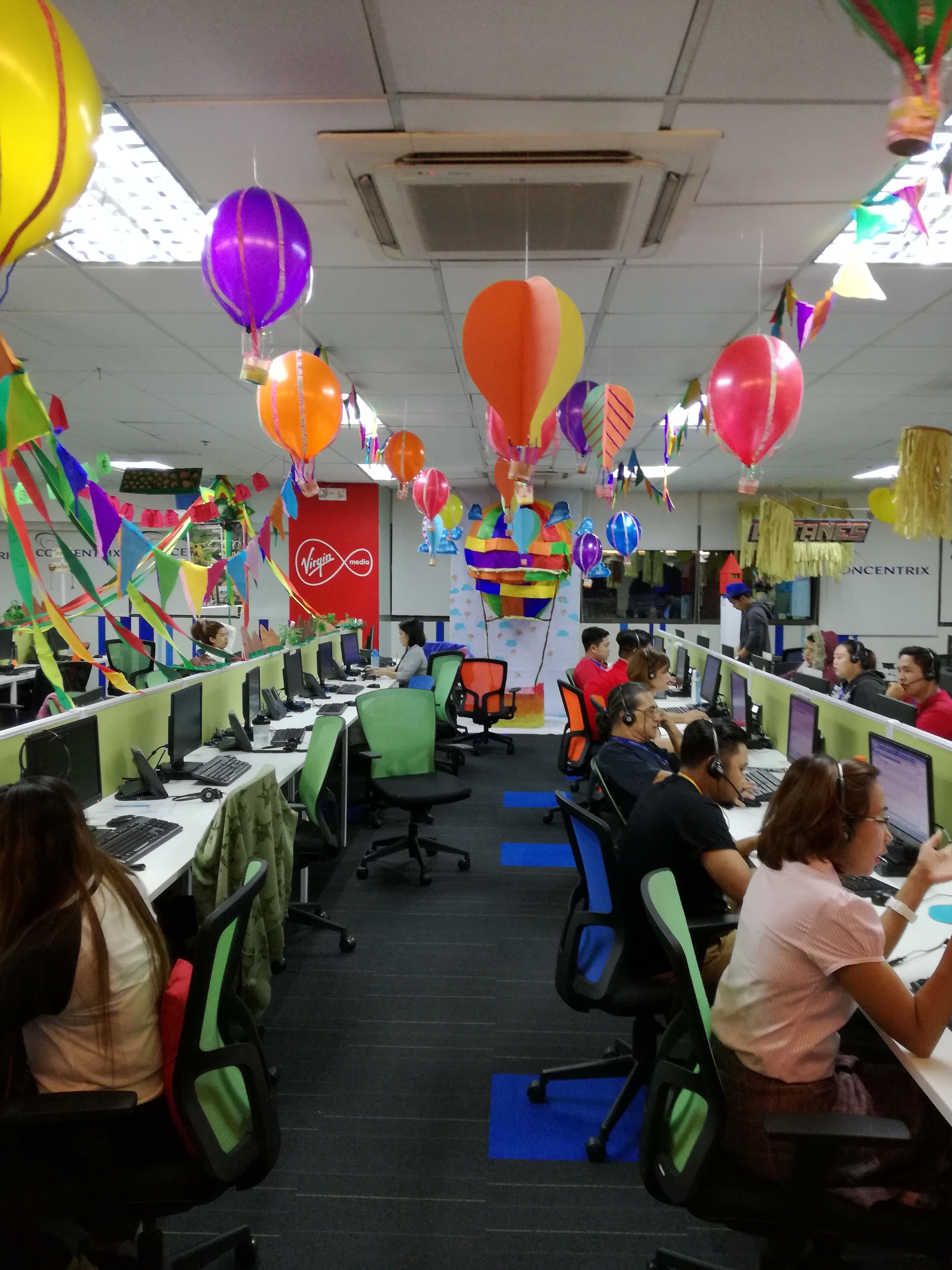
For all these we have the then Secretary of the Department of Tourism Mina Gabor, British Airways, and Korean national Mr. Sung Kee Paik who is a hot air balloon pilot to thank. The festival happens every second week of February where other aero sporting events in skydiving, flag jumps, micro light and rocketry demonstrations.
For the design, the team used balloons designed with ropes and small baskets to create miniature hot air balloons. They also created a life size hot air balloon designed toward the end of their bay.
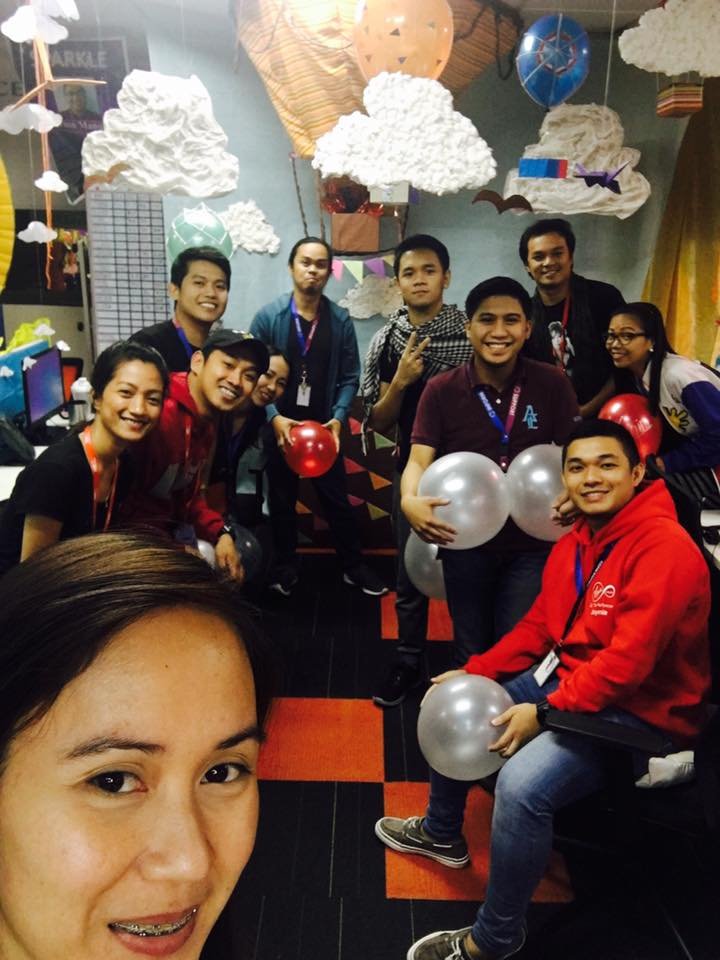
Calle Crisologo (Vigan, Ilocos Sur)
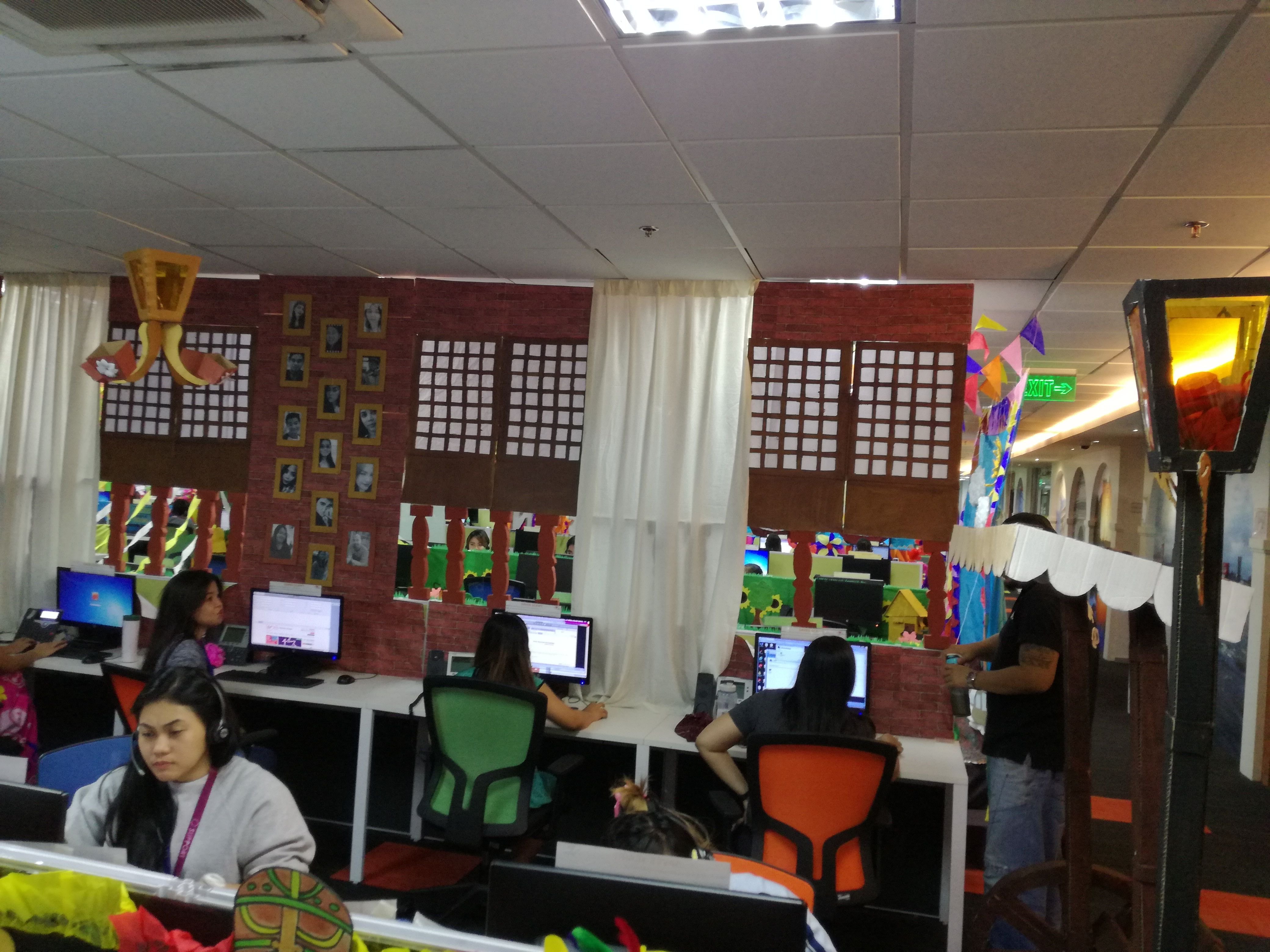
The team designed their work station with painted carton boxes to imitate the look of "capiz shell" windows that were used in the old Spanish houses. They also have a designed bench designed after a "kalesa", and some antique looking street lights.
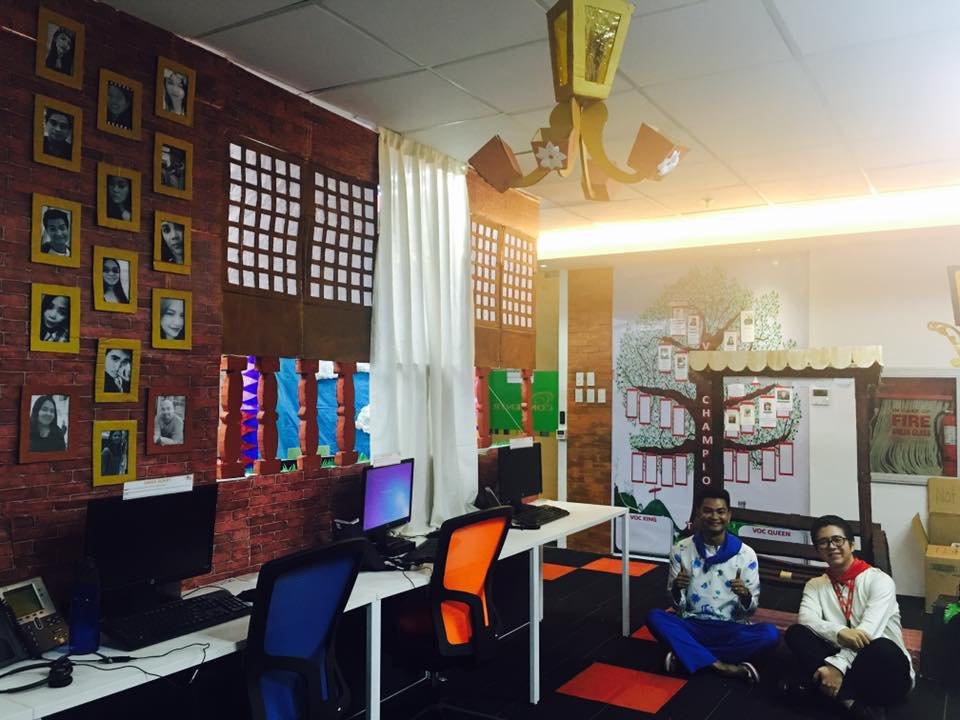
Hot Chili & Mayon Volcano of Bicol
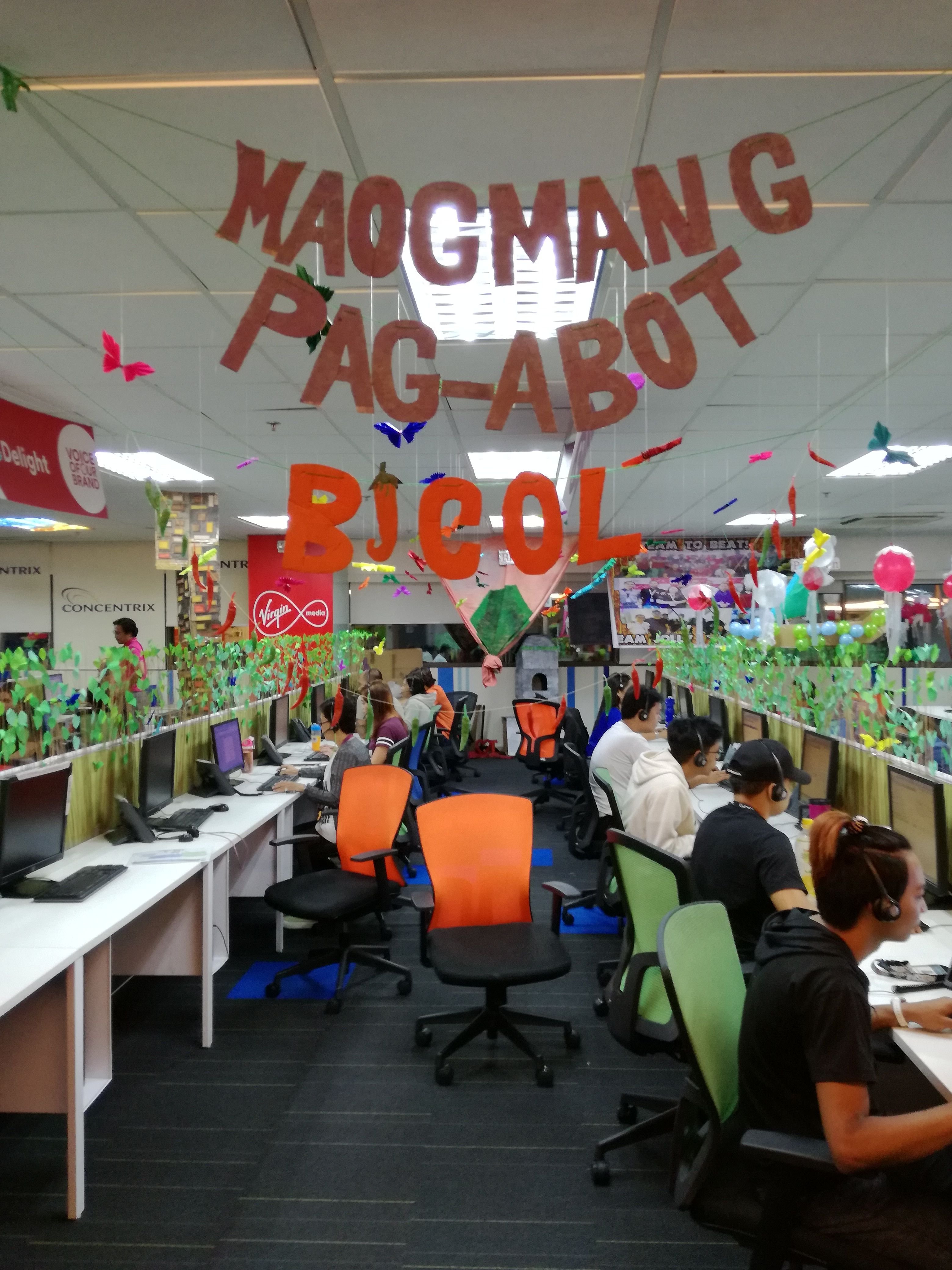
"Maogmang Pag-abot Bicol" (Welcome to Bicol) designed with chili peppers will welcome you to this bay assigned to design their work station inspired by the Province of Bicol. In the other view below, the "I" in Bicol was replaced by a huge chili pepper. Towards the end of the bay, the team created a paper mache replica of the Mayon Volcano in perfect symmetry, and a replica of the Casaga church ruins next to it. They have also added miniature trees and carabaos in each desk.
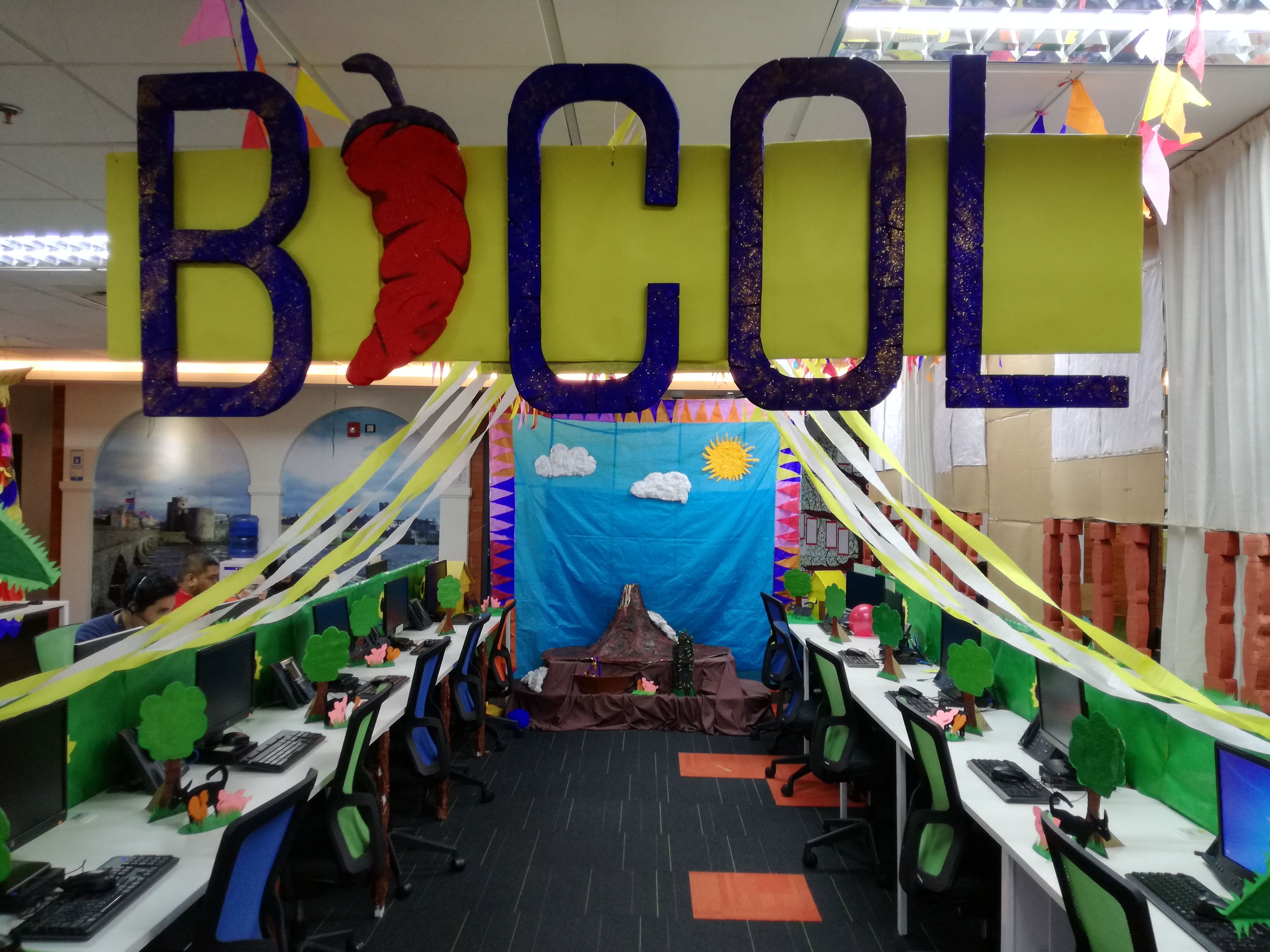
Colorful Sinulog of Cebu
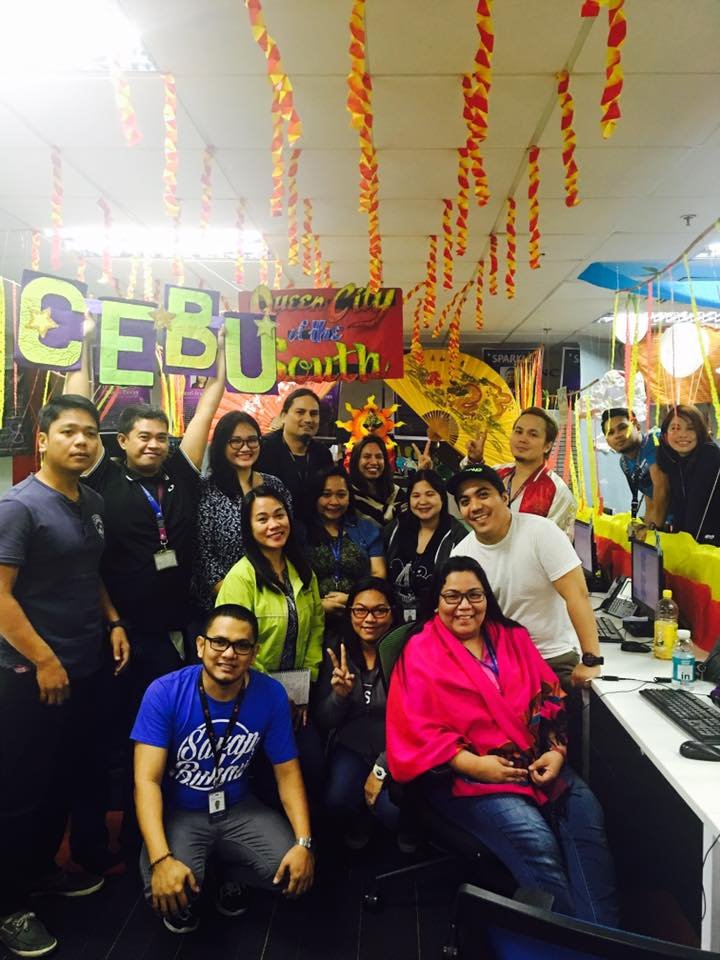
Contrary to more popular belief, the Sinulog festival's been in existence long before the Spanish colonization. Pre-Hispanic colonization, the Sinulog dance features pagan relics in place of the now statue of Child Jesus. The historic event where Magellan gave a statue of Child Jesus to Rajah Humabon's wife, is one of the earliest gesture of acceptance of western religious belief of Catholicism. Sinulog in native Cebuano means "like water current movement". The present two steps forward and one step backward dance, with the accompanying drums is still based on the native tradition and parade at the Mactan river. In January of each year, Cebu becomes a prime tourist destination both for domestic and international visitors to witness the colorful Sinulog festival.
The team designed their workstation with colorful papers, and an image of the "Sto. Nino" (Child Jesus) towards the end of the bay.
Masskara Festival of Bacolod City
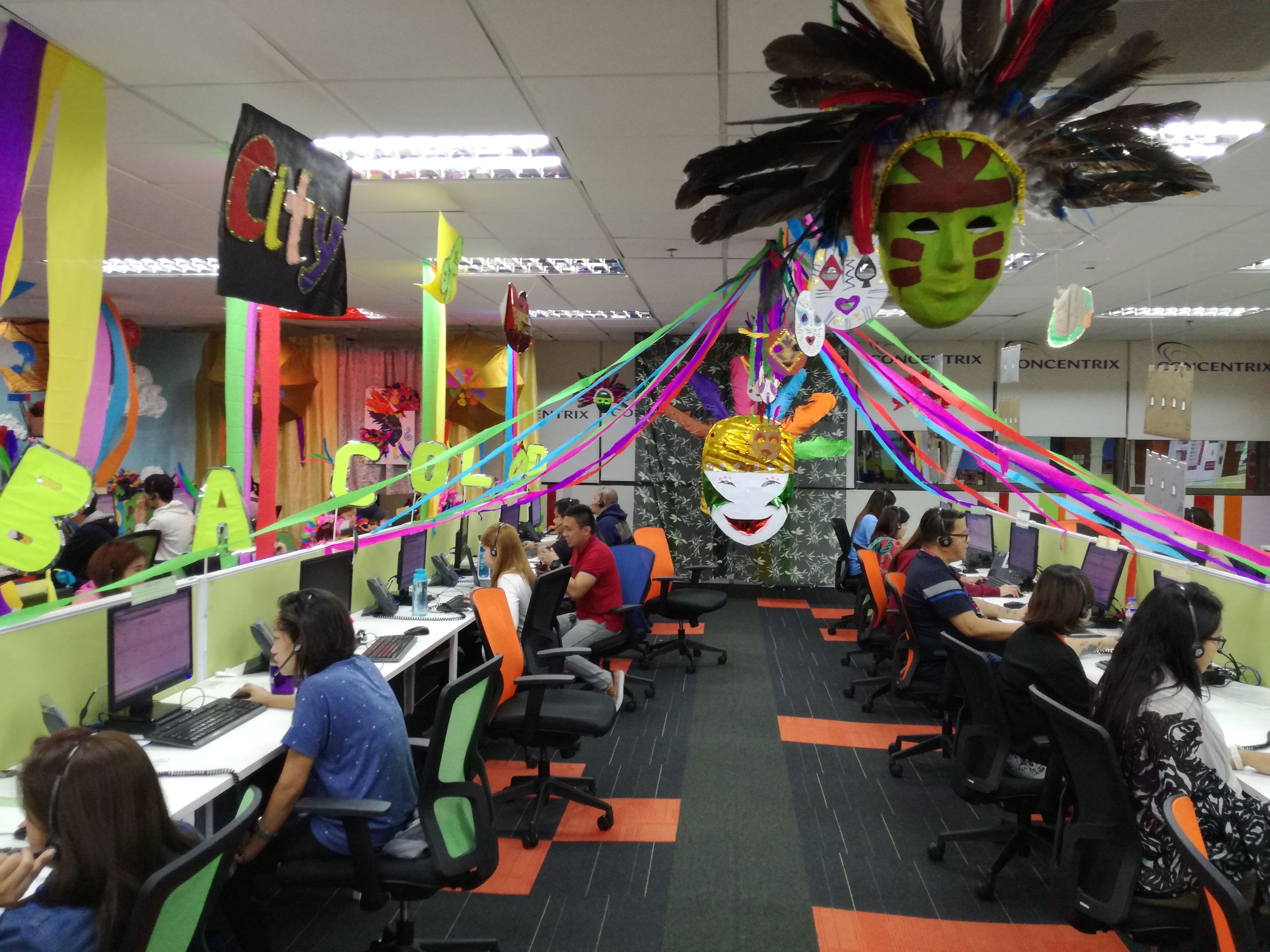
This team used masks and colorful papers to design their workstation. Towards the end of the bay there is also a huge mask wearing a smile.
Thank you for reading this post. It is important that we continue being proud of who we are and where we are from. While my role at work requires me to educate my staff about the culture of our clients in the west, I will continue to advocate our own culture and traditions.
References
Hot Air Baloon Festival: https://en.wikipedia.org/wiki/Philippine_International_Hot_Air_Balloon_Fiesta
Calle Crisologo: https://www.vigan.ph/attractions/calle-crisologo-mena-crisologo-street.html
Hot Chili & Mayon Volcano of Bicol: https://en.wikipedia.org/wiki/Albay
Masskara Festival: https://en.wikipedia.org/wiki/MassKara_Festival
